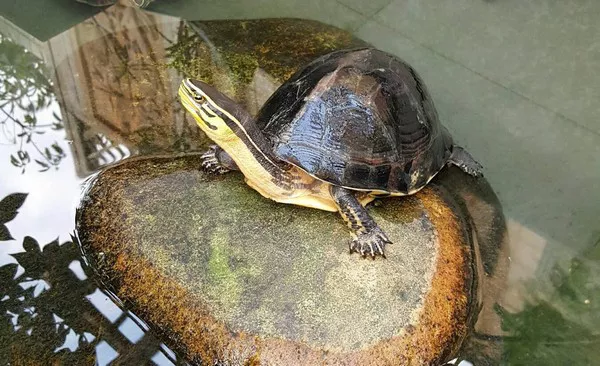Owning a pet turtle can be a rewarding and unique experience. These remarkable reptiles can make fascinating companions, but they also require specific care and attention to thrive in captivity. If you’re considering bringing a pet turtle into your life, it’s crucial to understand their needs and provide them with a suitable environment. In this comprehensive guide, we will explore what you need to have a pet turtle, from choosing the right species to creating a comfortable habitat and ensuring their well-being.
Selecting the Right Turtle Species
The first step in having a pet turtle is choosing the right species. Different turtle species have varying requirements, temperaments, and sizes. Here are some popular pet turtle species to consider:
Red-Eared Slider (Trachemys scripta elegans): These are one of the most common pet turtle species. They are known for their distinctive red markings on the sides of their heads. Red-eared sliders are semi-aquatic and require a spacious tank with both water and basking areas.
Eastern Box Turtle (Terrapene carolina carolina): Eastern box turtles are terrestrial and require a well-enclosed outdoor pen with access to both sun and shade. They are not typically kept indoors.
Russian Tortoise (Agrionemys horsfieldii): Russian tortoises are small, herbivorous turtles suitable for indoor or outdoor enclosures. They are known for their hardy nature and are ideal for beginners.
Painted Turtle (Chrysemys picta): Painted turtles are similar to red-eared sliders but are smaller and more cold-tolerant. They require aquatic setups with basking areas.
African Aquatic Sideneck Turtle (Pelusios castaneus): These turtles have distinctive necks that they tuck sideways beneath their shells. They are semi-aquatic and need both water and basking areas.
Creating the Right Habitat
Once you’ve chosen the species that suits your lifestyle, it’s time to set up their habitat. The specific requirements will depend on the species, but here are some essential components:
Enclosure: The size and type of enclosure vary by species. For aquatic turtles like red-eared sliders or painted turtles, a large aquarium or pond with appropriate filtration is necessary. Terrestrial turtles like Russian tortoises need a secure outdoor pen or a spacious indoor enclosure.
Substrate: Provide the appropriate substrate for your turtle’s habitat. Aquatic turtles benefit from a clean gravel or sand substrate in their aquatic area, while terrestrial turtles may require a mixture of soil and coconut coir.
Heating and Lighting: Turtles need a basking area with a heat lamp to provide the right temperature gradient in their enclosure. Full-spectrum UVB lighting is essential for their overall health.
Filtration: Proper filtration is crucial for aquatic turtles to maintain clean water. Invest in a quality filter designed for your tank size and species.
Basking Spot: A basking spot with a flat, dry surface is necessary for turtles to regulate their body temperature. Use basking platforms or rocks for this purpose.
Water Quality: Maintain clean, dechlorinated water for aquatic turtles. Regular water changes are essential to prevent health issues.
Feeding and Diet
Understanding your turtle’s dietary needs is essential for their well-being. The diet varies by species but generally consists of the following:
Pellets: Commercial turtle pellets or sticks are formulated to provide essential nutrients. Ensure they are species-specific and not overly processed.
Live or Frozen Food: Offer a variety of live or frozen prey items such as insects, worms, and small fish. Aquatic turtles can also eat aquatic plants like duckweed.
Vegetables and Greens: Leafy greens, vegetables, and fruits should be a part of your turtle’s diet. Suitable options include kale, collard greens, carrots, and bell peppers.
Calcium Supplements: Dust your turtle’s food with a calcium supplement to prevent calcium deficiencies and shell problems.
Proper Care and Maintenance
Owning a pet turtle involves ongoing care and maintenance:
Regular Cleaning: Keep the enclosure clean by removing waste and replacing water regularly. Clean and disinfect the enclosure periodically.
Health Check: Monitor your turtle’s health and behavior. Any signs of illness, such as lethargy, loss of appetite, or unusual behavior, should prompt a visit to an experienced reptile veterinarian.
Handling: While turtles are not typically handled as frequently as other pets, some interaction is beneficial. Handle your turtle gently and wash your hands before and after to prevent contamination.
Legal Considerations: Research local laws and regulations regarding pet turtles, as some species may be restricted or require permits.
Conclusion
Owning a pet turtle can be a fulfilling and educational experience when you provide them with the right care and environment. By choosing the appropriate species,creating a suitable habitat, offering a balanced diet, and maintaining their health and hygiene, you can enjoy a long and rewarding companionship with your pet turtle. Always strive to meet their specific needs to ensure their well-being and happiness.
Recommended reading:

























